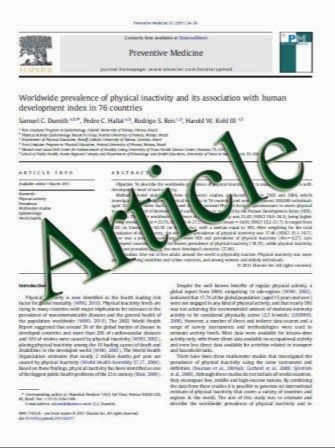Postpartum depression according to time frames and sub-groups: a survey in primary health care settings in Rio de Janeiro, Brazil
- نوع فایل : کتاب
- زبان : انگلیسی
- مؤلف : Gustavo Lobato, Claudia L. Moraes, Alessandra S. Dias , Michael E. Reichenheim
- چاپ و سال / کشور: 2011
Description
This study aimed at estimating the prevalence of postpartum depression (PPD) according to postpartum periods and sub-groups in public primary health care settings in Rio de Janeiro, Brazil. A cross-sectional survey was carried out in five primary health care units and included 811 participants randomly selected among mothers of children up to five postpartum months. Women were classified as depressed and given scores on Edinburgh Postnatal Depression Scale (EPDS) above 11. The overall estimate of PPD was 24.3% (95% CI, 21.4–27.4). However, estimates were not homogeneous during the first 5 months postpartum (p value=0.002). There was a peak of depressive symptoms around 3 months postpartum, when 128 women (37.5%, 95% CI, 29.1–46.5) disclosed scores above 11 on EPDS. Regarding the magnitude of PPD according to some maternal and partners' characteristics, it was consistently higher among women with low schooling, without a steady partner, and whose partners misused alcohol or used illicit drugs. The prevalence of PPD among women attending primary health care units in Rio de Janeiro seems to be higher than general estimates of 10–15%, especially among mothers with low schooling and that receive little (if any) support from partners. Also, the “burden” of PPD may be even higher around 3 months postpartum. These results are particularly relevant for public health policies. Evaluation of maternal mental health should be extended at least until 3 to 4 months postpartum, and mothers presenting a high-risk profile deserve special attention.
Arch Womens Ment Health (2011) 14:187–193 Received: 22 March 2010 / Accepted: 23 January 2011 / Published online: 6 February 2011 # Springer-Verlag 2011


